Llamas and alpacas are wonderful creatures that are often mistaken for each other. And while llamas actually grow to double the size of alpacas, both develop a large, fluffy fleece similar to that of sheep.
So, how can we help keep llamas and alpacas cool in the summer?
To prevent heat stress, llamas and alpacas must be sheared before temperatures rise and the summer heat becomes too hot to handle.
Shearing their middle section allows air to circulate around their bellies and armpits, keeping these creatures cool and comfortable on hot summer days.
And while llamas and alpacas do love to be lazy and lie about soaking up the sun, extreme temperatures call for extra measures. Fans, wading pools, and plenty of cool, fresh water are just some of the ways to keep alpacas and llamas happy and healthy in the heat.
Keep reading to learn more tips and tricks that are sure to keep your alpacas and llamas cool in the summer.
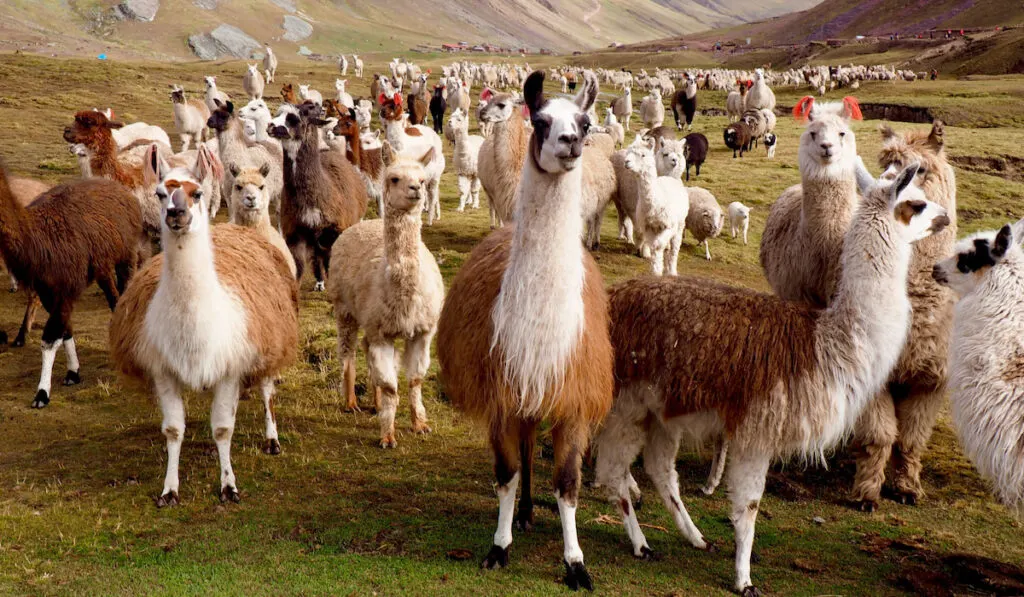
Table of Contents
Alpacas and Llamas, Where Do They Come From?
Originally found in the high mountain ranges of Peru and Chile and protected only by their thick, woolly fleeces, alpacas and llamas adapted to deal with harsh, cold temperatures and biting winds.
Nowadays, alpacas and llamas are common in North America, and they sometimes need help adjusting to the warmth and humidity of the summer seasons.
How Do I Know When Alpacas or Llamas Are Overheating?
Even if you take all the precautions necessary to keep your alpacas and llamas healthy, heat stress is always a concern. Diagnosing it quickly and starting treatment immediately is key to your animal’s safety.
Here are some of the most common signs of heat stress in alpacas and llamas:
- Being lethargic, lying down with no desire to move unless agitated
- Frothing at the mouth
- Nasal flaring
- Open-mouth breathing
- Not eating
- Body temperature is elevated
- Drooling
- Staggering when trying to walk
- Stiffness
- Elevated heartbeat
If your alpacas or llamas show these signs, take immediate action to cool them down.
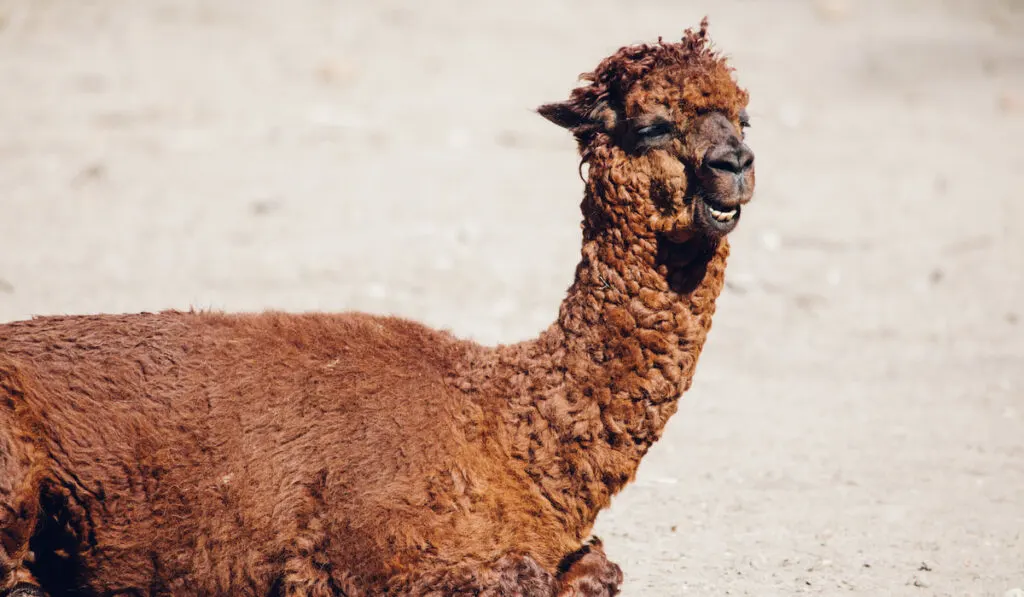
First Aid for Alpacas and Llamas Showing Signs of Heatstroke
For alpacas and llamas, their thermal windows are their bellies, armpits, and groin area. By applying cold water or ice bags to these areas of your animal’s body while also including their legs, you should bring their body temperature back down to normal.
If necessary, Banamine can be administered as an anti-inflammatory, but it is best to consult a veterinarian first.
Give the afflicted animal electrolytes in order to restore their sodium, calcium, potassium, chloride, phosphate, and magnesium levels to normal.
If the animal is not responding well, get the attention of a veterinarian.
Body temperatures between 107 and 110°F (41.6 and 43.3°C) for more than an hour or two may present the following complications:
- Dehydration
- Inflammation
- Electrolyte imbalance
- Tissue damage
- Liver damage
- Pregnant females may miscarry or deliver premature cria
You mustn’t hesitate to call your vet if your animal is suffering from heatstroke.
Prevention Is Better Than the Cure
Get to know your alpaca’s and llama’s behaviors. These animals love to laze about on warm days. One of their favorite positions is on their backs, belly up to the sun with little or no movement at all. So, if you’re a new alpaca or llama owner, don’t panic when they’re like this; they’re not dying but rather sunbathing.
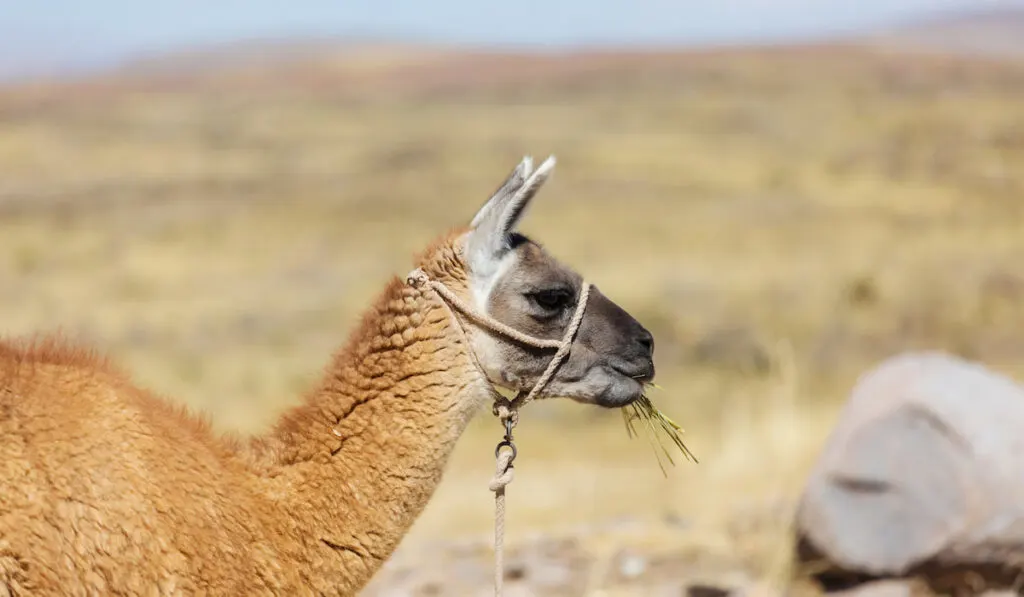
How Do You Know if It’s Too Hot for Your Animals to Be Outside?
High temperature is one thing, but when mixed with humidity, there is cause for concern!
When humidity levels are at 75%, it becomes much more difficult for alpacas and llamas to cool themselves by panting or sweating.
It would be wise to become familiar with the heat index to know when it’s necessary to implement safety protocols.
Add temperature and humidity levels to find the heat index value.
Temperature + Humidity = Heat Index
When the heat index is lower than 130 it is safe for alpacas and llamas to be active outside. But when it rises above 130, measures must be taken for your animals’ health and safety.
While alpacas and llamas are very good at adapting to different environments, if the heat index value reaches 150, they can no longer adapt.
Temperature/humidity thermometers are inexpensive, and when placed outside in the appropriate location, you will have no problems monitoring the conditions of the environment.
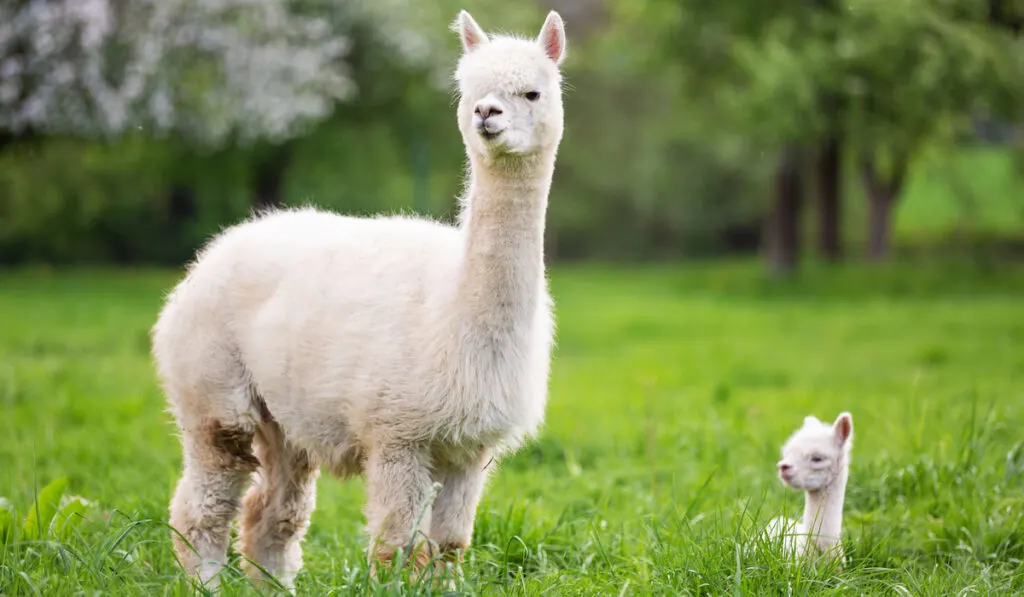
Keep an Eye on Your Crias
Very young crias (baby llamas and alpacas) need extra attention when the hot summer sun kicks in. Their body’s temperature regulation system needs to mature before they can handle the heat like their parents, which only happens a month after birth.
And while all crias may be in danger of heat stess, it’s the colored crias that are at particular risk because they absorb the heat of the sun more easily than white ones.
Keep a close eye on your herd’s offspring during hot days and heat waves and watch out for strange behavior. When crias are dehydrated, they will try to drink anything available, including urine.
Call a vet if you think your cute crias are in danger of heat stroke.
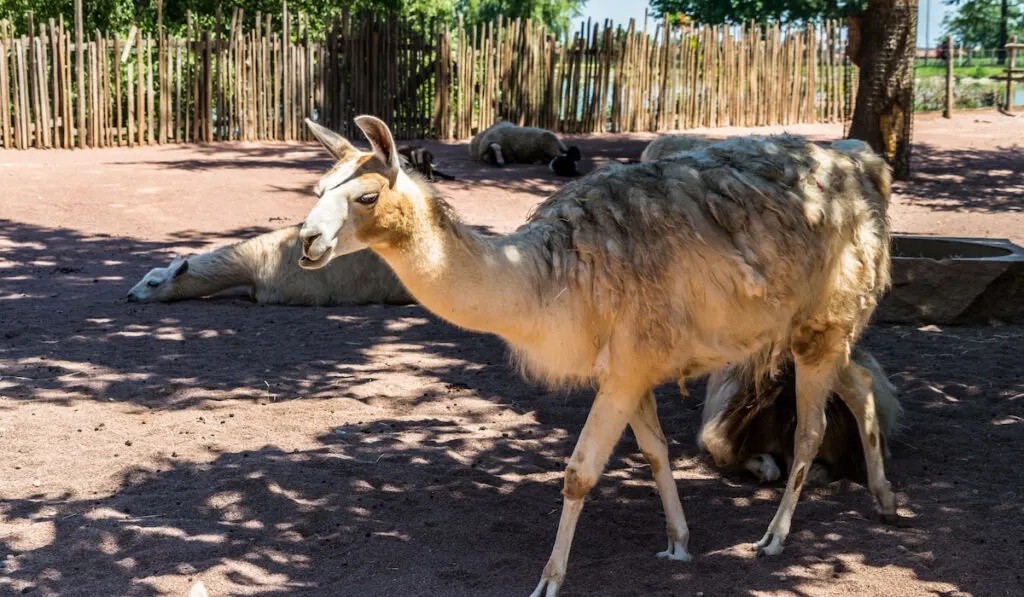
How Owners Can Prevent Heatstroke in Their Animal
1. Shade
Your alpacas and llamas must have plenty of access to shade in their enclosure, and shade can be created in several ways.
Trees are probably the best providers as they will supply shade no matter how high or low the sun is. Any permanent structure, like a barn, will also provide shade for at least a portion of the day.
2. Shelter
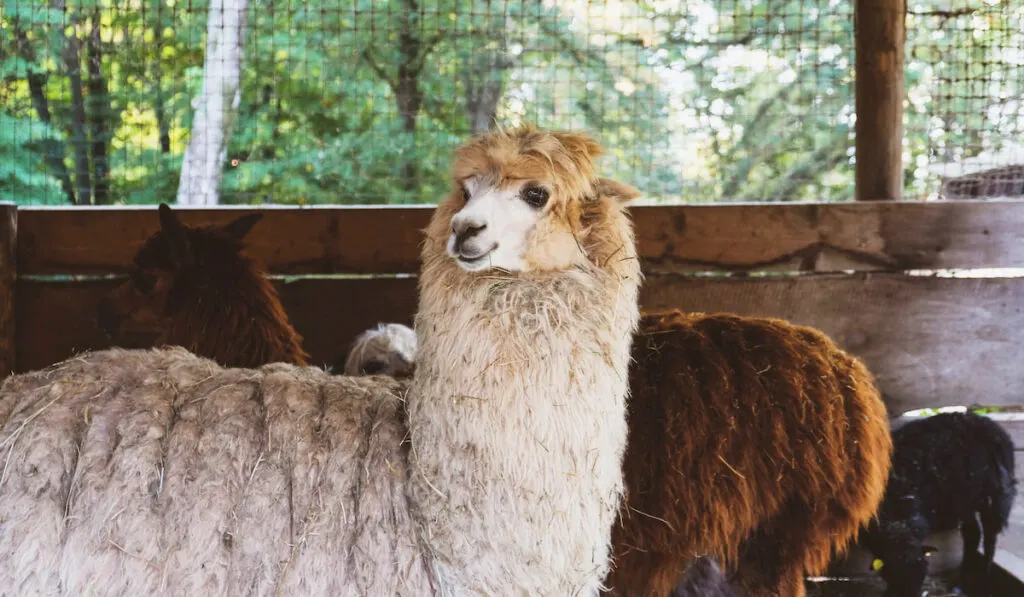
The ideal shelter for alpacas or llamas should have three sides with a cover.
Many alpaca keepers use fans to circulate the air in their shelters by simply using box fans with extension cables. As long as the fans are kept high enough to avoid the animals, there should be no risk of injury.
To keep fresh air circulating, fans should also be set up to establish cross-ventilation where air is taken from shady areas so that your alpacas and llamas can take a nice break from the hot sun in their cool shelter.
Water sprinklers and misters in or around the shelter are other great ideas. It is possible to lower the temperature by as much as 20 degrees with these inexpensive, easy-to-set-up items.
3. Bedding
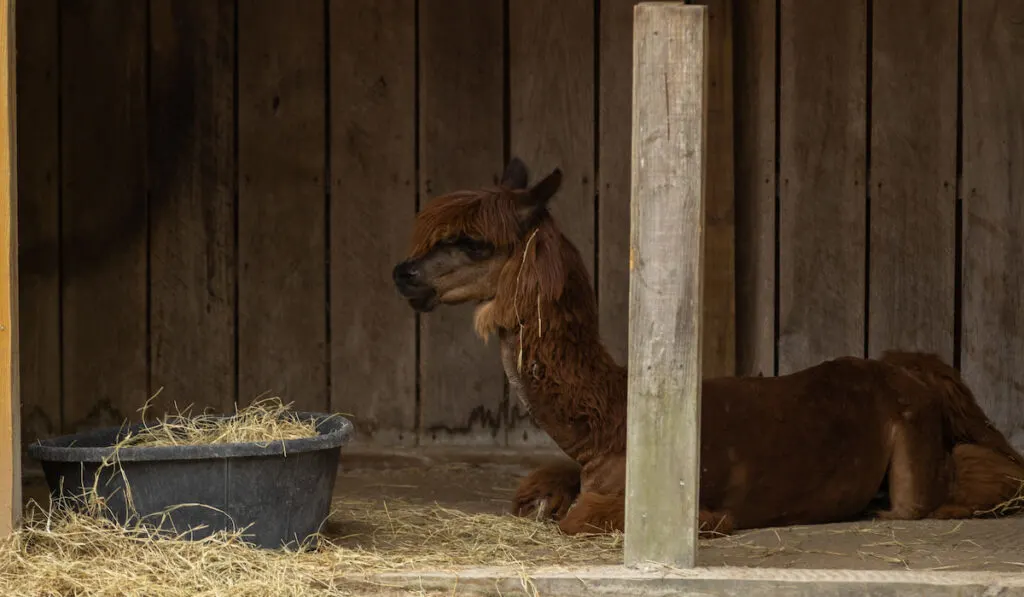
It is best not to use straw when it comes to summertime bedding for alpacas and llamas. Unfortunately, straw acts as an insulator, which is more effective at keeping the heat in rather than drawing it out.
The best materials for drawing heat out of your animals, so they remain cool and comfortable are sand, pea gravel, or simply earth.
4. Shearing
Shearing alpacas and llamas in advance of expected higher temperatures is good practice. And while this is usually around the same time annually, your herd will appreciate a trim if an unexpected hot spell is forecast to be more than 80°F (26.6°C).
It is best to avoid “fad” shearing. But what’s that? Fad shearing is when the main body of the animal is sheared but not the fiber from its neck and legs.
While some people may think this looks cute, these unsheared areas will retain body heat, which is the exact opposite of what you should be trying to achieve during a hot summer.
Your alpacas and llamas would rather keep cool than look cool!
5. Water
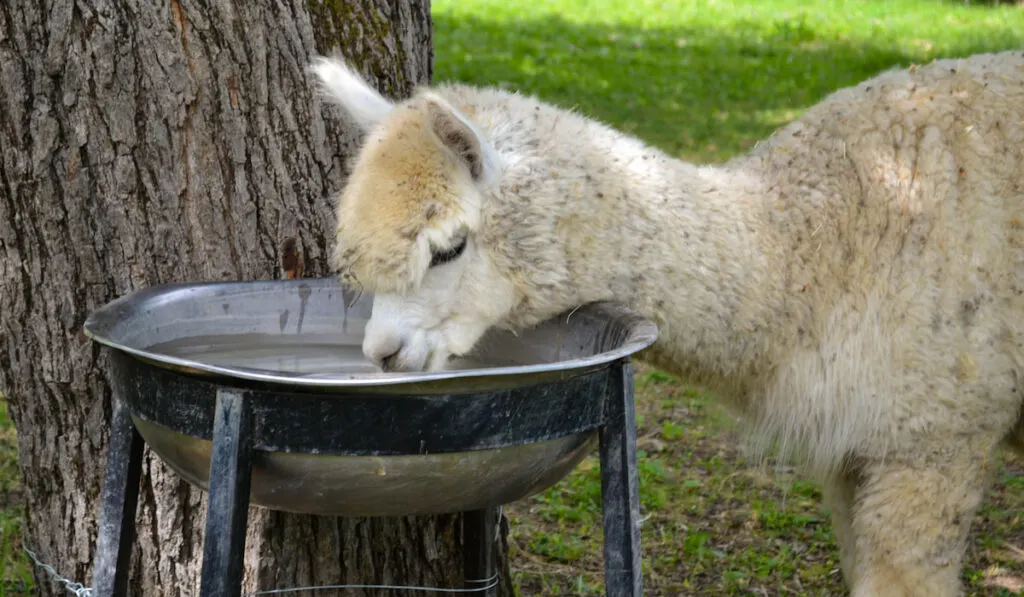
To fight the battle against heat stress in your herd, you must understand how vital the water supply is. During the hot summer months, when temperatures soar, alpacas and llamas will double the amount of water they consume.
Ensure to keep all water containers out of the sun in shady areas. You can keep the water cool for longer by adding frozen water bottles.
It may be worth investing in some automatic waterers if you have more than a few alpacas or llamas. Not only will these devices cut down on your workload, but a cool, clean water source will always be available to your animals.
6. Electrolytes
If temperatures rise to dangerous levels, have a water source available that contains electrolytes.
But make sure it’s not the sole water source, as some of your herd may reject it in preference to normal, fresh water. Clean the electrolyte container daily in case of bacterial growth.
7. Shower Time
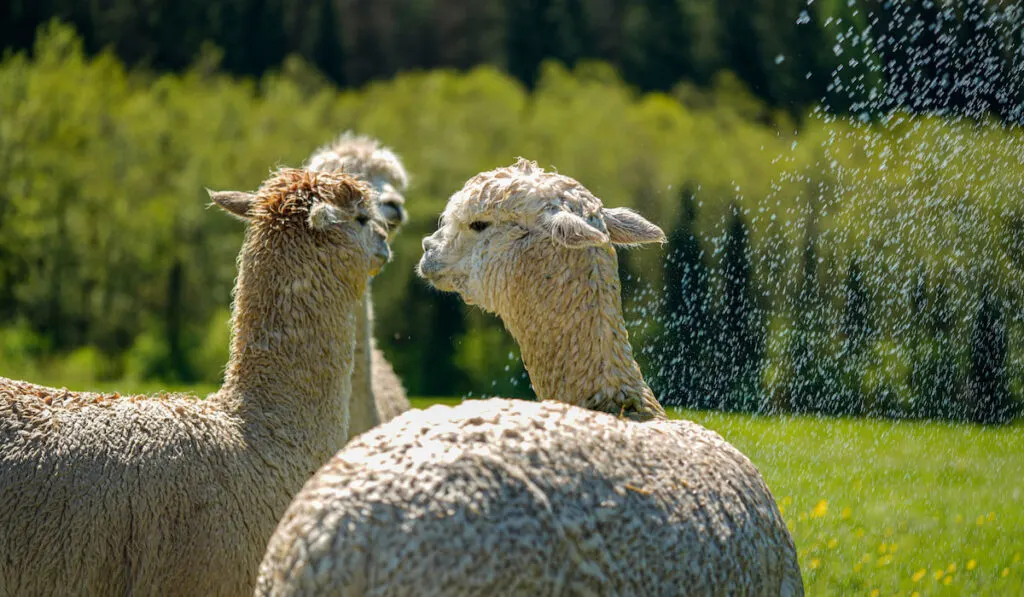
Make it a routine on hot summer evenings when your alpacas or llamas come in for the night to spray their bellies with water. Not only will they love it, but it will also bring their core body temperature down.
Of course, you can also shower your animals during the day when the heat outside is more intense, but usually, this encourages them to go back into the sun, so you will have to do it again in the evening.
8. Time to Take a Dip
If you have a wading pool available, alpacas and llamas will be your friends for life! While these animals can swim, not all of them like to. But when temperatures are high, it is so satisfying for them to get their legs wet.
Try using a kiddie pool as a cheaper alternative to a wading pool. Your fluffy friends will probably use it to get their bellies wet, so be sure to change the water daily!
Final Thoughts
Alpacas and llamas are hardy animals that can adapt to different environments. But when it comes to extreme temperatures on hot summer days, they need your help to keep cool.
Heat stress is common with these animals because of their warm, fluffy fleeces. So, be sure to shear them before they suffer and keep a particular eye on the young. They’re cute and cuddly, but they’re not born equipped to care for themselves.
Resources
- http://www.wintersetvet.com/uncategorized/llamas-and-alpacas/
- https://www.libertyalpacas.com/blog/3447/heat-stress-in-alpacas
- http://www.shagbarkridge.com/info/heat.html
- https://www.alpacainfo.com/academy/article/3326/heat-stress-in-alpacas
- https://savvyfarmlife.com/do-alpacas-need-shelter/
- http://www.alpacashttps://www.heritagefarmevents.com/post/alpaca-cooling-options
